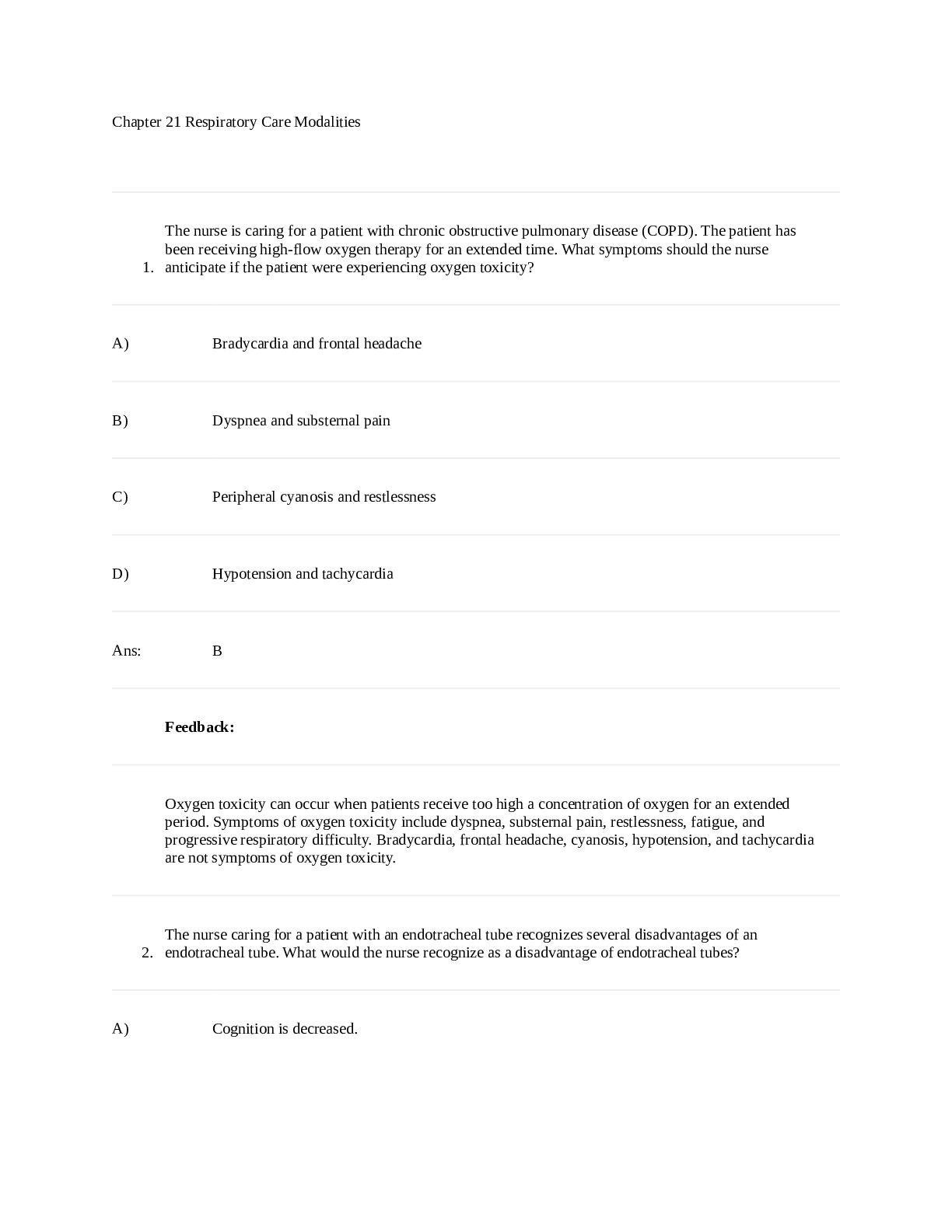Chapter 21 Respiratory Care Modalities (With Correct answers)
Course
Subject
Chemistry
Category
Questions and Answers
Pages
29
Uploaded By
ATIPROS
Preview 5 out of 29 Pages


Download all 29 pages for $ 12.00
Reviews (0)
$12.00
